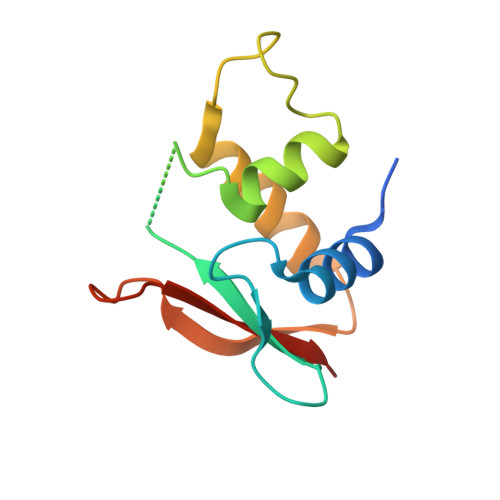Structures of apo IRF-3 and IRF-7 DNA binding domains: effect of loop L1 on DNA binding.
De Ioannes, P., Escalante, C.R., Aggarwal, A.K.(2011) Nucleic Acids Res 39: 7300-7307
- PubMed: 21596780
- DOI: https://doi.org/10.1093/nar/gkr325
- Primary Citation of Related Structures:
3QU3, 3QU6 - PubMed Abstract:
Interferon regulatory factors IRF-3 and IRF-7 are transcription factors essential in the activation of interferon-β (IFN-β) gene in response to viral infections. Although, both proteins recognize the same consensus IRF binding site AANNGAAA, they have distinct DNA binding preferences for sites in vivo. The X-ray structures of IRF-3 and IRF-7 DNA binding domains (DBDs) bound to IFN-β promoter elements revealed flexibility in the loops (L1-L3) and the residues that make contacts with the target sequence. To characterize the conformational changes that occur on DNA binding and how they differ between IRF family members, we have solved the X-ray structures of IRF-3 and IRF-7 DBDs in the absence of DNA. We found that loop L1, carrying the conserved histidine that interacts with the DNA minor groove, is disordered in apo IRF-3 but is ordered in apo IRF-7. This is reflected in differences in DNA binding affinities when the conserved histidine in loop L1 is mutated to alanine in the two proteins. The stability of loop L1 in IRF-7 derives from a unique combination of hydrophobic residues that pack against the protein core. Together, our data show that differences in flexibility of loop L1 are an important determinant of differential IRF-DNA binding.
Organizational Affiliation:
Department of Structural and Chemical Biology, Mount Sinai School of Medicine, Box 1677, 1425 Madison Avenue, NY 10029, USA.

















